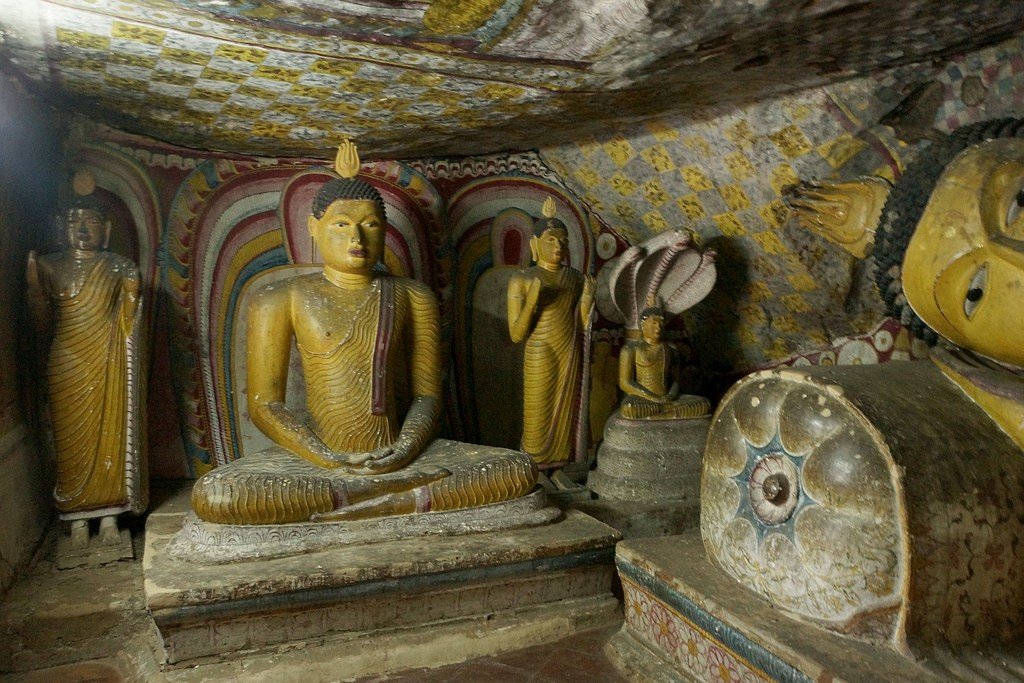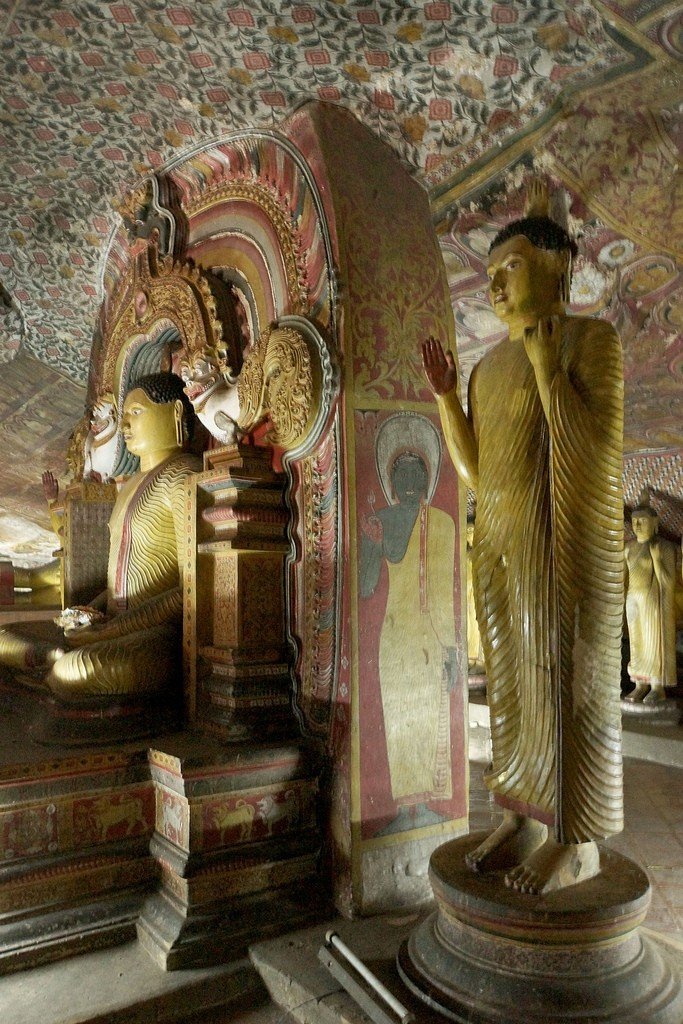Dambulla Temple
Dambulla Temple is a cave Buddhist temple carved into the rock, with numerous statues of Buddha. The temple has been a sacred pilgrimage site for 22 centuries and is located on a forested, picturesque mountaintop in the Dambulla settlement of the Central Province of Sri Lanka, 148 km from Colombo.
Generally Dambulla has more than 80 caves, but the main attraction is the elaborately carved Dambulla Golden Cave Temple, the largest and best preserved in Sri Lanka. Many successive rulers of the island were involved in the creation of the cave temple complex. The Dambulla temple consists of five caves, each containing many Buddhist and Hindu statues and images dating back to the 12th to 18th centuries.










The temple caves
- The first cave is Devarajalena. It contains a well-preserved 14th statue of a reclining Buddha in the tradition of Anuradhapura sculpture. The Buddha’s face is devoid of any expression, he is entering nirvana. The texture of the garment covering the body is clearly delineated.
- The second cave is Maharajalena. It is the tallest and most imposing, measuring 22 meters in length and 6 meters in height. The cave is guarded by stone figures located on either side of the entrance. Now there are 56 figures of sitting and standing saints, bodhisattvas, Vishnu, King Wattaga-mini Abhaya (who founded the caves) and Nissanka Mala (he paid to have 50 statues of Buddha gilded).
- The third cave is Maha Alut Viharaya. The cave is separated by a stone wall and is the second largest in size. The attraction of the cave is the figure of a reclining Buddha, his head resting on his right arm, with a pillow under his arm. The expression of blissful serenity is interesting, which was quite difficult to convey considering the statue is carved out of granite. There are a total of 56 different statues in the cave.
- The fourth cave is the Pachchima Viharaya. Its Western Temple houses ten Buddha figures with clearly defined facial features, all carved from rock and painted in bright colors. The fifth cave is Devana Alut Viharaya. It is the smallest, carved in the early twelfth century. It has eleven Buddha statues, the main one being a large reclining Buddha, a magnificent work of local craftsmen. There are also statues of the gods Vishnu, Kataragama and the local god Devata Bandara.
Photography is strictly prohibited in the caves. Open: daily 8.00-17.30. Admission is payable or by single ticket to the Cultural Triangle.
